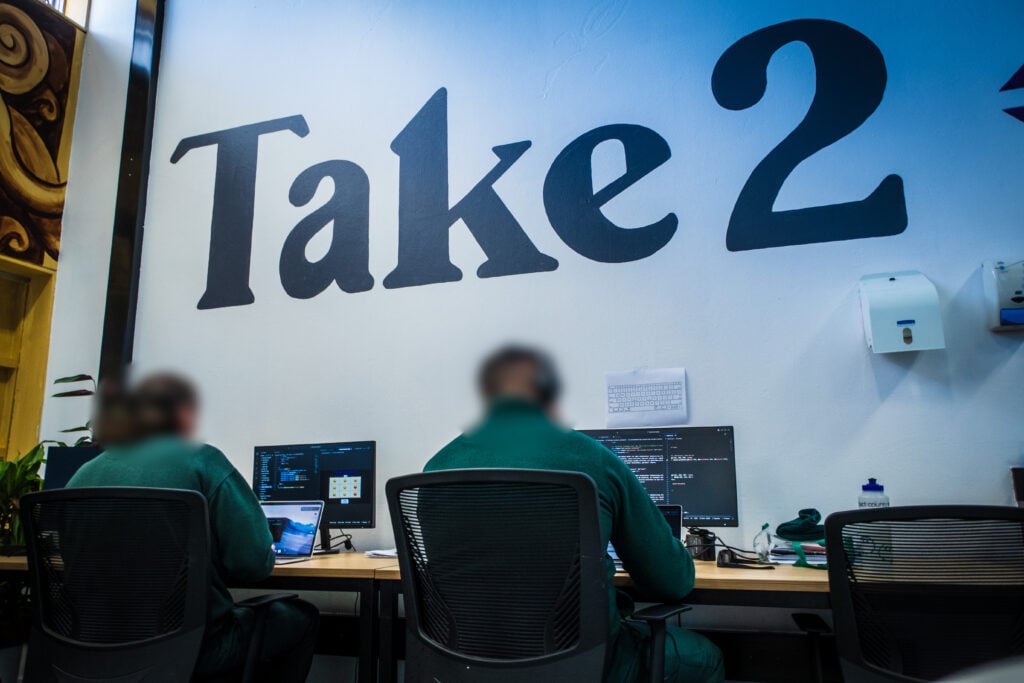The New Blockchain Trilemma Is Here, and It’s Not About Technology

Technology tamfitronics
The original blockchain trilemma claimed that blockchain users were always going to have to choose between decentralization, scalability, and security. At best, they could have two out of three. The new trilemma is about products, customers, and regulatory approval. Again, pick any two.
When it came to the technology trilemma, at least in the case of Ethereum, the network was long seen as having strong decentralization and robust security, but seriously constrained when it came to capacity. Today, while the trade-offs between these different priorities have never gone away, blockchains themselves have advanced so enormously that in all three areas, most users consider them to be “good enough.”

01:00
Latin America’s Crypto Surge: A Battle Against Inflation

01:48
Nishad Singh’s Lawyers Ask Judge to Spare Him Prison; Italy to Raise Capital Gains Tax on Crypto

01:36
Bitcoin Jumps Above $67K to Nearly a Three-Month High

02:04
Tesla Is Moving Bitcoin; Trump-Supported Token Falls Flat
For many, Ethereum’s transition from Proof of Work (PoW) to Proof of Stake (PoS) and launch of layer 2 networks, is seen as a transition point from a time when trade-offs between these options had big impacts. Ethereum continues to offer solid security and decentralization as a base layer, but the many layer 2 networks available, also offer massive scalability.
The shift into this new trilemma was triggered earlier this year by the nearly simultaneous approval of Bitcoin and Ethereum ETFs in the U.S. and the start of the Markets in Crypto Assets regulation (MiCA) which came into effect in Europe. Between these two landmark events and a host of other countries implementing regulatory regimes for digital assets, a fundamental shift is underway in the market.
For many of the biggest companies in the world of digital assets, they possess products and customers, but lack regulatory approval. More than 70% of crypto assets and trading is done offshore, and many of the crypto-native firms cut back their efforts to get licensed in big markets during the recent downturn. As a result, these firms have an existing customer base and quite a few digital asset offerings but lack regulatory approvals to move their businesses onshore and chase new revenues.
A second set group of firms we see a lot of, are digital-asset natives in regulated markets. They have products and regulatory approvals but no customers. These firms have focused on creating digital assets in a regulated environment. They were ahead of their traditional financial peers and have had approvals for their products, but no legacy customer base with whom to sell them.
Finally, you have the biggest and most mature financial institutions. Banks have enormous customer bases and mature regulatory compliance processes, but usually no digital assets to offer.
Like the technical trilemma, there is no perfect solution for matching the entities and creating the perfect union that offers complete regulatory approval, an enormous range of products and a giant customer base. There are several obstacles that stand in the way of that outcome.
First and foremost, the biggest obstacle to offering everything to everyone are the regulators themselves, and with good reason. Over and over again, in my conversations with regulators, they make a clear distinction between the kinds of offerings they believe are suitable and safe for mass market customers, and those that are ready for sophisticated investors. Crypto and digital assets are high risk, they are volatile and not such a good idea for people who are living paycheck to paycheck.
The second big obstacle is the cultures of all these different entities. Even the most legitimate, well-audited and well-run offshore crypto native is an entirely different beast from the world’s big banks. These are the people who went ahead and started companies even when many of their friends and family told them crypto was a scam. They definitely aren’t going to work well in a big bank culture.
In the end, my own expectation is that, like the technical trilemma, the market will reach a level of maturity for all types of customers and offerings that will be “good enough” for most. Those with an appetite for risk will be able to find it inside a regulated ecosystem, but just not with the most conservative traditional financial entities and individual users will find a curated, lower-risk window into the world of digital assets.
Note: The views expressed in this column are those of the author and do not necessarily reflect those of CoinDesk, Inc. or its owners and affiliates. They also do not necessarily reflect the views of the global EY organization or its member firms.
Edited by Benjamin Schiller.
Disclosure
Please note that our
privacy policy,
terms of use,
cookies,
and
do not sell my personal information
have been updated
.
CoinDesk is an
award-winning
media outlet that covers the cryptocurrency industry. Its journalists abide by a strict set of
editorial policies.
CoinDesk has adopted a set of principles aimed at ensuring the integrity, editorial independence and freedom from bias of its publications. CoinDesk is part of the Bullish group, which owns and invests in digital asset businesses and digital assets. CoinDesk employees, including journalists, may receive Bullish group equity-based compensation. Bullish was incubated by technology investor Block.one.
:format(jpg)/www.coindesk.com/resizer/gvQ0K48HbuKoVkU_YziB_qGGumc=/arc-photo-coindesk/arc2-prod/public/7PHKDOYX5JHC7NZHCETB4RQHGI.png)
Paul Brody is Global Blockchain Leader for EY (Ernst & Young). Under his leadership, EY is established a global presence in the blockchain space with a particular focus on public blockchains, assurance, and business application development in the Ethereum ecosystem.



 Hot Deals
Hot Deals Shopfinish
Shopfinish Shop
Shop Appliances
Appliances Babies & Kids
Babies & Kids Best Selling
Best Selling Books
Books Consumer Electronics
Consumer Electronics Furniture
Furniture Home & Kitchen
Home & Kitchen Jewelry
Jewelry Luxury & Beauty
Luxury & Beauty Shoes
Shoes Training & Certifications
Training & Certifications Wears & Clothings
Wears & Clothings
















